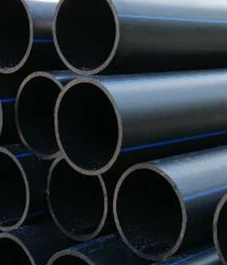des . 17, 2024 15:27 Back to list
High-Density Polyethylene Double Wall Corrugated Pipes for Various Applications
Understanding HDPE Double Wall Corrugated Pipe
High-Density Polyethylene (HDPE) double wall corrugated pipes have gained significant traction in various industries due to their exceptional durability, flexibility, and cost-effectiveness. These pipes are increasingly being utilized in drainage, sewage, and stormwater management systems, thanks to their ability to efficiently handle a variety of applications without compromising on performance.
What is HDPE?
HDPE, or High-Density Polyethylene, is a type of plastic that is known for its high strength-to-density ratio. This material is made from petroleum and is widely recognized for its excellent resistance to impact and a variety of chemicals, making it suitable for both environmental and structural applications. The properties of HDPE make it an ideal choice for applications requiring substantial strength and durability.
Structure of Double Wall Corrugated Pipe
As the name suggests, double wall corrugated pipes consist of two layers an inner smooth layer and an outer corrugated layer. The inner layer is designed to facilitate efficient fluid flow, while the outer layer provides additional strength and structural integrity. The corrugated structure helps in distributing loads evenly, making these pipes highly resistant to crushing and ensuring longevity. This combination of layers results in a lightweight yet robust product that can withstand harsh environments.
Key Benefits
1. Durability and Longevity
One of the primary advantages of HDPE double wall corrugated pipes is their durability. They are built to last for several decades, with lifespans often exceeding 50 years. Their resistance to corrosion and chemical leaching ensures that they maintain their structural integrity even when exposed to aggressive environmental conditions.
2. Lightweight and Flexible
Compared to traditional materials such as concrete or steel, HDPE pipes are significantly lighter. This allows for simpler handling and easier installation. Their flexibility enables them to withstand ground movements and changes in soil conditions without cracking or breaking.
hdpe double wall corrugated pipe

3. Hydraulics and Flow Efficiency
The smooth inner wall of double wall corrugated pipes minimizes friction, promoting high flow rates and reducing the risk of blockages. This is especially important in drainage systems where efficient water management is crucial. The design also reduces the possibility of sediment buildup, allowing for long-term functional performance.
4. Environmental Impact
HDPE is a recyclable material, contributing to sustainability efforts in construction and infrastructure development. The low energy consumption during production and transportation further reduces its carbon footprint. By using HDPE double wall corrugated pipes, industries can play a part in minimizing environmental impact while maintaining high-quality performance.
5. Cost-Effective Solutions
The initial investment in HDPE pipes may be higher than that of traditional materials; however, the long-term savings are considerable. The durability and low maintenance requirements mean reduced replacement and repair costs, making HDPE a cost-effective solution over time.
Applications
Due to their advantages, HDPE double wall corrugated pipes are employed in various applications, including
- Sewer and Drainage Systems They are widely used for municipal sewer systems and stormwater management because of their capacity to handle large volumes of fluid and resist blockages. - Landfill and Waste Management Their durability and chemical resistance make them ideal for use in landfills, where they can manage leachate and other waste-related concerns. - Agriculture Farmers often leverage these pipes for subsurface drainage, helping to manage water levels and enhance crop productivity. - Telecommunication and Electrical Ducting Given their flexibility and strength, HDPE pipes are also used in the installation of telecommunications and power lines.
Conclusion
HDPE double wall corrugated pipes offer unparalleled advantages in strength, flexibility, and durability, making them a preferred choice in many modern applications. As industries move towards more sustainable practices, the adoption of these pipes is likely to increase. By utilizing HDPE technology, we can meet infrastructure needs while also protecting our environment for future generations. In conclusion, investing in HDPE double wall corrugated pipes not only supports efficient and effective water management solutions but also promotes long-term cost savings and environmental responsibility.
-
Durable Glossy PVC Rigid Sheet | Premium High-Shine Panels
NewsAug.26,2025
-
Durable PP Rigid Sheet: Lightweight, Chemical Resistant Solutions
NewsAug.21,2025
-
PVC Grey Sheet for Extraction: Chemical Resistant & Durable
NewsAug.19,2025
-
Durable PVC Pipe Fittings for Plumbing & Irrigation Needs
NewsAug.18,2025
-
HDPE Steel Belt Reinforced Spiral Corrugated Pipe | High Strength
NewsAug.17,2025
-
HDPE Pipe Fittings: Durable, Leak-Proof Solutions
NewsAug.16,2025

